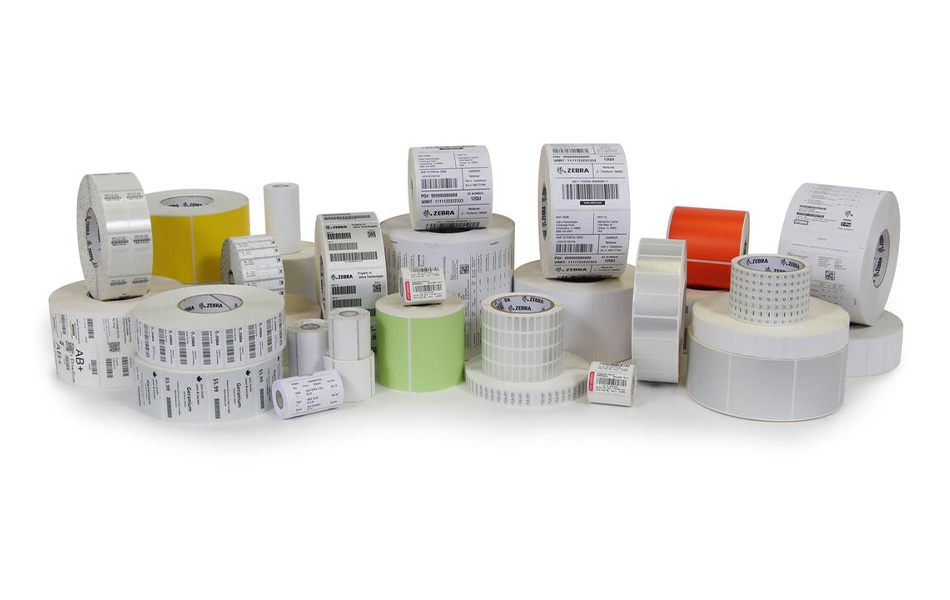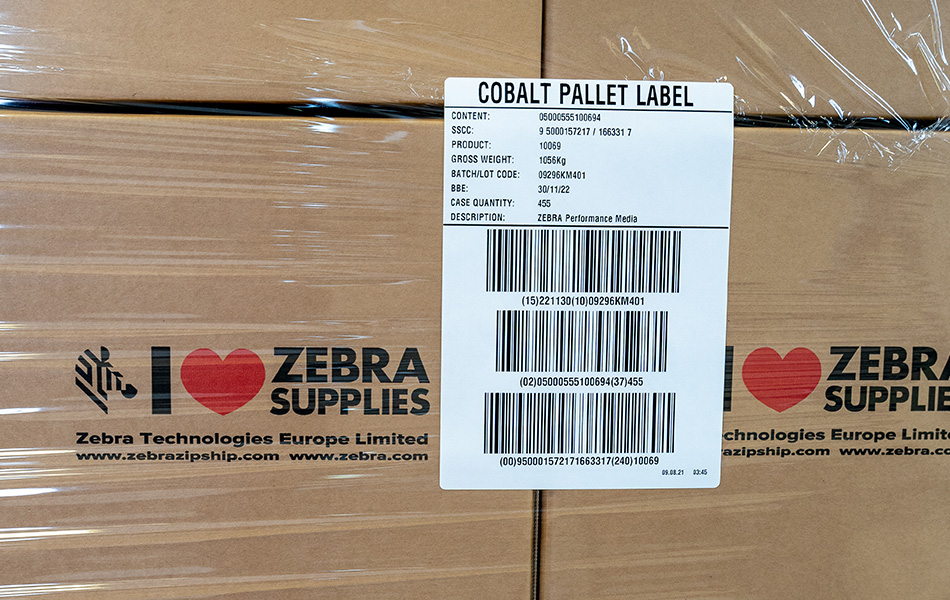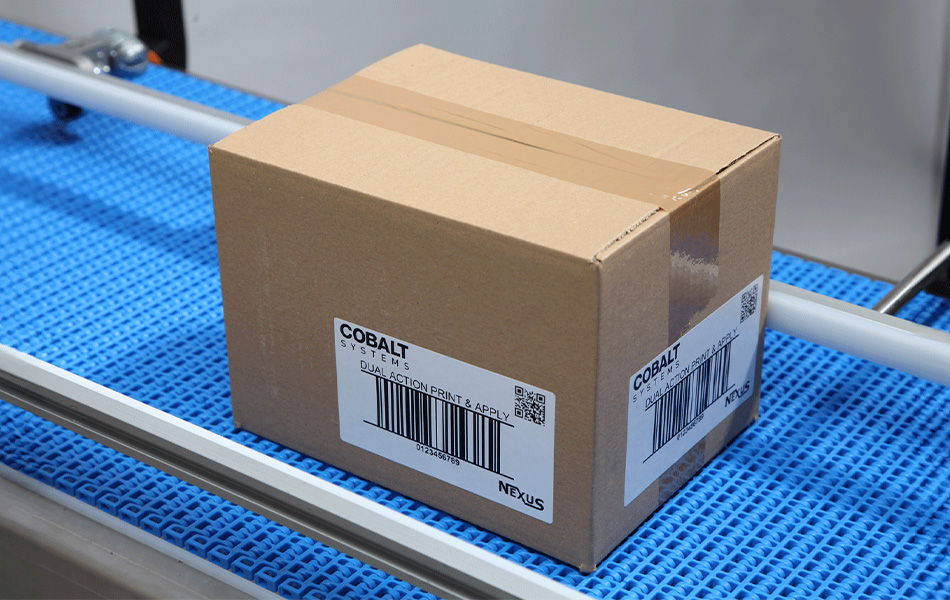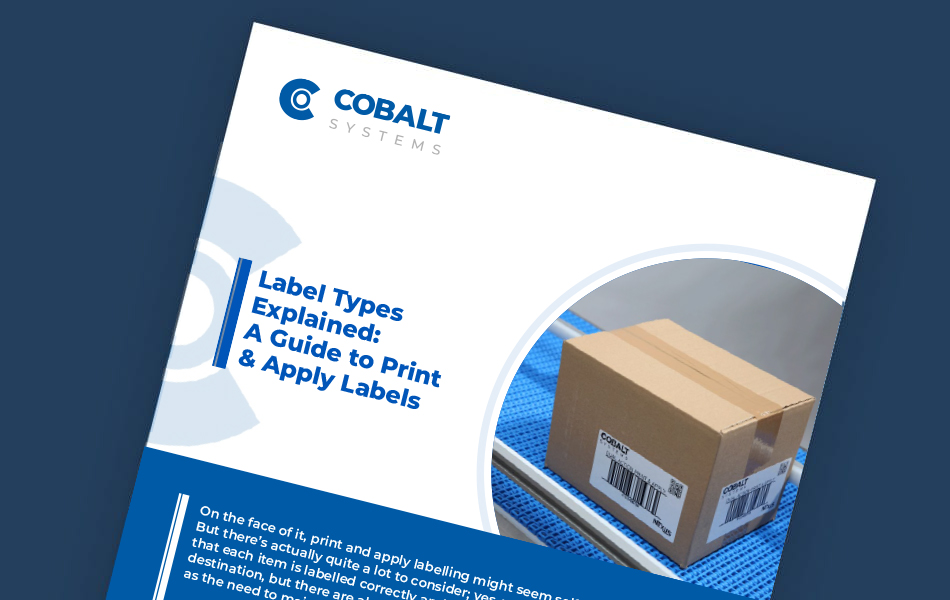On the face of it, print and apply labelling might seem self-explanatory. But there’s actually quite a lot to consider; yes, you need to make sure that each item is labelled correctly and that it gets to the right end destination, but there are also regulatory implications to consider, as well as the need to maintain a consistent brand identity.
Also, it’s not merely a case of popping a label on a container and then sending it on its way. For one thing, certain types of labels are designed for use on specific materials and in certain environments. This is another reason why it’s so important to understand the different varieties of print and apply labels and their applications.
At Cobalt, we’ve been driving up standards in print and apply labelling, as well as barcoding, for more than two decades – so we like to think we know what we’re talking about. In this guide, we’ll run through the different types of print and apply labels, how and when to use them, and other relevant considerations including design.
- Basic Label Types for Print and Apply Systems
- Specialised Label Types and Applications
- Considerations for Label Material and Substrate
- Label Design and Customisation Options
- Factors to Consider When Choosing Labels
- Tips for Optimal Label Printing and Application
- Future Trends in Print and Apply Labelling
A PDF version of this guide is also available to download at the bottom of the page.

Basic Label Types for Print and Apply Systems
Here are some of the basic label types used in print and apply labelling, their various uses and potential applications.
Direct thermal labels
Used in thermal printing, where heat is applied directly to the surface of the label to create an image or text, direct thermal labels are typically made of heat-sensitive paper or synthetic material coated with a heat-sensitive layer.
This coating reacts when the label is passed through a thermal printer, creating a visible image without the need for ink, toner or ribbons.
Thermal transfer labels
As with direct thermal labels, thermal transfer labels are also used in thermal printing. The difference between the two, however, is that thermal transfer labels require a thermal transfer ribbon to create an image on the surface.
The ribbon is coated with wax-based ink or a resin-based material, which melts and transfers on to the label when heated by the thermal printhead, thereby imprinting the desired design or text.
Specialised Label Types and Applications
Alongside the more basic types of print and apply labels, there are others with more specialised designs and applications.
Here’s what you need to know about these.
Gloss vs. matte labels
Gloss and matte labels are two different types of label finishes, each with their own characteristics and uses. Most obviously, gloss labels have a shiny and reflective finish, whereas matte labels have a non-reflective, flat finish.
Gloss labels reflect light, making text and printed images appear more visually striking and vibrant, matte labels reduce glare and reflections which can improve readability. Gloss labels therefore tend to be used for materials where vibrant and eye-catching colours are considered paramount, while matte labels are used to convey a more muted, formal and professional appearance.
Removable vs. permanent adhesive labels
Some adhesive labels are designed to be removable, while others are designed to be permanent. Whether you choose a removable or permanent adhesive label product will depend on your intended use, and the level of strength and durability required.
Removable adhesive labels are best suited to temporary labelling needs and can be peeled off cleanly from most surfaces. Permanent adhesive labels, by contrast, are designed to adhere to surfaces securely for an extended period, such as items intended for long-term use or storage.
Weatherproof and waterproof labels
While weatherproof and waterproof labels both offer protection against moisture and environmental factors, they serve different purposes and therefore have different characteristics. It’s important to understand these so that you know which type of label is best suited to your purpose.
Weatherproof labels are designed to withstand exposure to weather conditions including rain, sunlight, snow and extreme temperatures. This makes them particularly well suited to use on outdoor products, for example, or products prone to being exposed to the elements during shipping or storage.
Waterproof labels, on the other hand, are specifically designed to withstand exposure to water and moisture. They are typically made from water-resistant synthetic materials such as polypropylene and vinyl, and have waterproof adhesive to prevent them from peeling off surfaces when exposed to water. These labels are well suited for use on items stored in wet or damp environments, such as refrigerated goods or beverages.
Extreme-temperature and cryogenic labels
High-temperature, low-temperature and cryogenic labels are designed to withstand extreme weather conditions. High-temperature labels are intended to withstand elevated heat without deteriorating, melting or losing adhesion, while cryogenic labels are designed to withstand extremely cold temperatures.
Typical uses for high-temperature labels include identification and tracking of parts and components during heat-intensive manufacturing processes, labelling of automotive parts, engine components and exhaust systems, and labelling of equipment, machinery and tools subjected to high temperatures during manufacturing processes.
Extreme low temperatures can also affect your labels. In the food processing industry labels will need to be able to withstand sub-zero temperatures in freezers and cold storage areas, and in the pharmaceutical industry, products such as medicines may be put in cold storage to maintain their efficacy.
Cryogenic labels, meanwhile, are commonly used for labelling vials, tubes and other containers used to store specimens and samples in biomedical research and clinical laboratories.
Compliance and regulatory labels
Certain items and products may be required to have a specific kind of label, communicating essential information such as ingredients and contents, safety warnings, environmental impact details or usage instructions. These labels are known as compliance or regulatory labels.
These labels may be a statutory requirement, and businesses that fail to comply may find themselves hit with a fine or other legal penalty. For example, under the terms of Natasha’s Law, food outlets in the UK selling prepackaged food for direct sale are required to provide full ingredient lists with clear allergen labelling.

Considerations for Label Material and Substrate
When choosing label material and substrate, there’s a few things you need to consider. First and foremost, you need to ensure that they’re appropriate for the particular application you have in mind. There are various factors to consider here.
You need to think, in particular, about the purpose for which they’ll be used and the environment to which they will be subjected. If your labels will be exposed, for example, to heat, cold, moisture or UV light, you will need to choose a label that’s designed for those conditions.
In addition, you’ll need to consider the surface to which your labels will be applied. Different surfaces, such as cardboard, glass and metal, will require different adhesives to ensure reliable adhesion. Your labels must also offer the necessary durability and longevity for their purpose.
Regulatory requirements for some uses may stipulate that labels must be made from a specific type of material in order to comply, so this is another thing you’ll need to take into consideration when choosing a label material or substrate.
Label Design and Customisation Options
Label design is an important consideration. How your labels look says a good deal about your business – including its brand identity – as well as serving the practical purpose of conveying important information. Your choice of label design software really matters.
Text must be clear and concise, and must include information such as the product name, plus any instructions and warnings that might be required along with contact details. Fonts must be clear and legible, and logos and images may be included to enhance visual appeal and reinforce brand identity.
The shape and size of your label should be based on the product packaging and available space, in addition to your own design preferences and branding. You should also think carefully about your choice of finish; the finish of your label – whether it’s gloss, matte, satin or another – can greatly enhance its look and feel.
Your label may also need to incorporate GS1-standard barcodes, graphics or other data. If this is the case, you must ensure that there’s sufficient space on your label to include this data, and avoid making the label look overly cluttered and untidy.
Factors to Consider When Choosing Labels
There are, as we’ve discussed, several key factors to think about when choosing labels – including size, material, substrate and design. We have also discussed the need to consider the environmental conditions the labels will be subjected to, along with regulatory compliance and industry standards.
But there are some other points you’ll need to bear in mind, too. Obviously, budgetary constraints will play a role. Businesses, whatever industry they’re in, have budgets that they need to work within – so you need to find a labelling solution that’s within your budget.
That said, choosing an entry level label type, printer or applicator can be a false economy. Getting labels wrong can be incredibly costly – the wrong data or shipping information could result in rejected or returned goods which could easily be the equivalent cost of an entire print and apply solution, so quality should be a key consideration.
You must also ensure that your choice of label material and design meets the requisite durability and readability requirements. This is particularly important if the label is intended for long-term use, or if it is being used in a particularly challenging environment.

Tips for Optimal Label Printing and Application
Printing quality labels requires quality equipment – which, in turn, needs to be properly maintained and calibrated for the best results. Here are some tips to help you get the most out of label printing.
We’ve already discussed the importance of choosing the right material for your labels, but it’s worth emphasising it again here. Choose label materials that are compatible with your printer and suitable for that label’s application and purpose. Think about factors such as adhesion and durability when choosing label materials.
Also, make sure your printer is properly calibrated to achieve optimum print quality. You should maintain your printer regularly, for example by cleaning and recalibrating the printhead. This should help to reduce the risk of problems such as smudging, streaking or misalignment.
Test print labels to verify print quality, layout, colour accuracy and so on. This should give you an idea in advance of starting full-scale label production about whether any adjustments need to be made, whether to the printer or to the layout of your label.
Always follow best practice for label application to ensure a professional appearance and reliable adhesion. Take care to avoid air bubbles or wrinkles when applying labels, and make sure the application surface is clean where possible.
Implement thorough quality control checks throughout the printing process to identify and address any potential problems. Make sure that labels, ribbons and inks are stored properly, according to the instructions, to reduce the risk of deterioration.
Future Trends in Print and Apply Labelling
The advent of new technologies and new innovations is changing the way we do business with one another – and the world of print and apply labelling is no exception. Some of these trends are already visible. Automation and the rise of artificial intelligence, in particular, are already increasing label output and enhancing readability.
Over the coming years, we can expect to see further advances in relation to AI and machine learning technology, which should serve to further streamline print and apply processes, boosting productivity. The digital transformation in labelling and packaging is also likely to continue, with smarter workflows and further advances in data analytics for better informed decision-making.
There will also be a stronger emphasis on sustainability, as industry continues to strive to be more environmentally friendly. This will include the increased use of recycled and recyclable materials, energy-efficient printing technologies and biodegradable inks.
Linerless labels are an important aspect of this sustainability drive. Label liners are difficult if not impossible to recycle, which is why linerless labels are such a good thing for the environment: they don’t use liners, making them a much more eco-friendly option.
These are just some of the trends likely to affect print and apply labelling in the years ahead. Their exact impact, of course, will depend on a number of other factors, including changing market demands and economic considerations.
In this guide, we’ve looked at the main label types, their uses, the main considerations to bear in mind when choosing a type of label and potential future developments in print and apply labelling. It’s essential to understand what you need from your labels – because making an informed choice can save you a lot of unnecessary hassle further down the line.
At Cobalt, we deliver first-class print and apply and barcoding solutions, with outstanding customer service and after-sales support. Contact our friendly and helpful team today and we’ll help you find the perfect labelling solution for your business.

